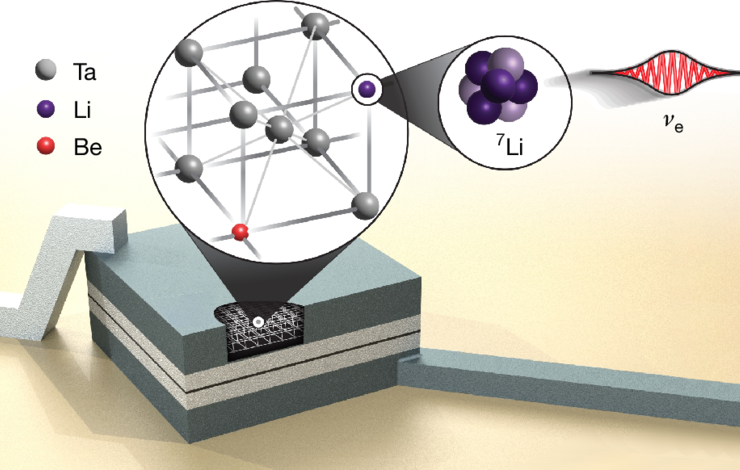13-02-2025

The research is the result of a collaboration between scientists from NOVA FCT, the Lawrence Livermore National Laboratory and the Colorado School of Mines in the United States of America, as well as the TRIUMF center in Canada. The work highlights the innovative use of radioactive beryllium atoms implanted directly into high-resolution detectors based on superconducting tunnel-effect junctions. This approach allows us to indirectly observe, through the recoil of the atom when a neutrino is emitted, the energy of the nuclear processes associated with the creation and emission of the neutrino.
To achieve the necessary precision in determining the extent of the neutrino's wave packet, researchers from the Laboratory of Instrumentation, Biomedical Engineering and Radiation Physics (LIBPhys-UNL) dedicated themselves to the detailed study of the atomic effects of beryllium decay. Accurate modeling of the electronic structure of the beryllium atom and the lithium atom (which it transforms into after nuclear electron capture) proved essential to accurately measure the recoil energy of the lithium atom within the detectors.
"Without precise calculations of the electronic structure of the elements involved in this nuclear reaction, we would not be able to distinguish purely nuclear effects from atomic effects, which contribute to the degradation of neutrino size limits", explains Mauro Guerra, researcher at LIBPhys-UNL. Jorge Machado, also from LIBPhys-UNL, highlights the interdisciplinarity of the study: "It is interesting to see how a relatively small experiment requires knowledge from several areas, such as nuclear and particle physics, quantum sensors and atomic physics, to measure something that has eluded much larger experiments established for several years.", José Paulo Santos, from the same research center also states that "This result represents a significant advance in the exploration of neutrino physics, also strengthening neutrino models sterile masses with masses in the keV range.
The complexity and innovation of the approach were recognized by experts in the field. "Technically, this is an extremely difficult measurement," says Alfons Weber of Johannes Gutenberg University in Mainz, Germany. "They used a truly ingenious method to perform a precision measurement, something I thought was impossible."
This work represents a significant advance in understanding the properties of neutrinos, offering new insights into their behavior and the fundamental limits of particle physics. Collaboration between different institutions and areas of knowledge reflects the importance of multidisciplinary science in solving fundamental problems in contemporary physics.